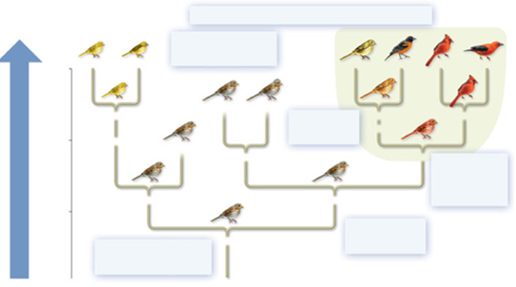The part of the axon closest to the cell body is the
A. hillock.
B. dendrite.
C. soma.
D. myelin sheath.
E. nucleus.
A. hillock.
You might also like to view...
The shaded group includes all of the species that were derived from one common ancestor, this group could also be called a(n)

A. polyphyletic taxon.
B. paraphyletic taxon.
C. phylum.
D. homology.
E. clade.
The structure in which meiosis occurs (which results in the formation of eggs) is the
A. cervix. B. ovary. C. vagina. D. uterus.
The five groups of archaea are:
a. Psychrophilic, carcinogenic, halophilic, high- and low-pH tolerant, and high-pressure tolerant b. Anaerobic, aerobic, thermophilic, high- and low-pH tolerant, and methanogenic c. thermophilic, halophilic, high- and low-pH tolerant, high-pressure tolerant, and methanogenic d. Anaerobic, aerobic, thermophilic, high-pressure tolerant, and hydrophilic e. Archaea are not divided into groups; they are a specific group of their own.
The age structure of the United States in 2015
A) has a broad base, suggesting a high birth rate. B) has a broad base, suggesting a low birth rate. C) shows that a greater proportion of the population is elderly now than in earlier decades. D) shows that the United States has not yet gone through a demographic transition.